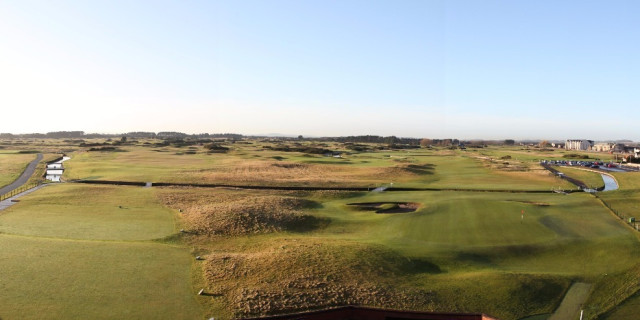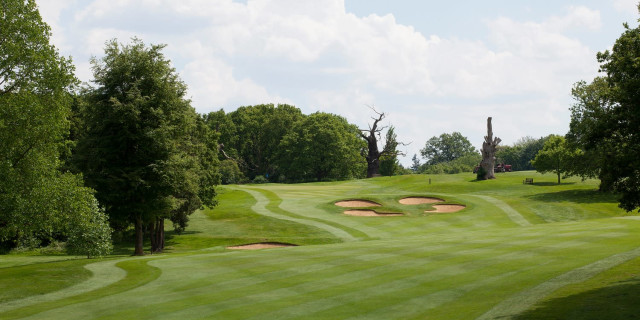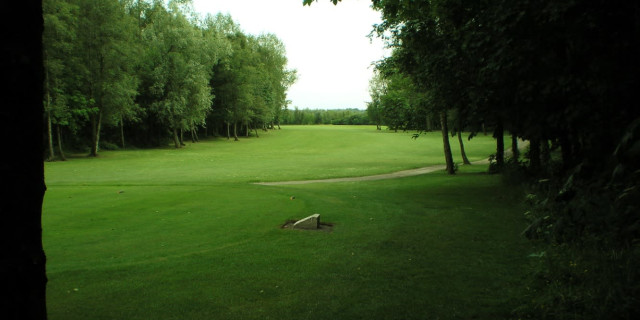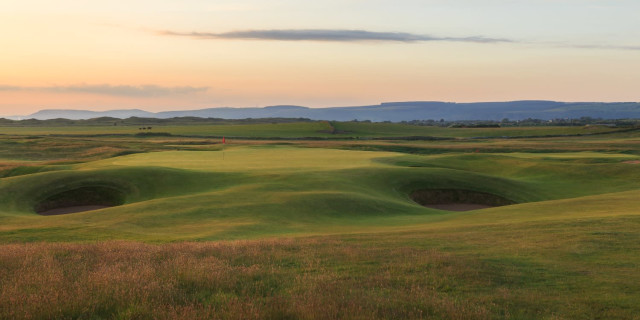
10 of the Best - Courses in Angus and Dundee
Angus features some of the most rugged coastline in Scotland and is a haven for wildlife. To the north and west, the topography is fairly mountainous. It lies in an area known as the Angus Glens, where the main industry is still hill farming. To the south and east the landscape consists of rolling hills bordering the sea. You will know all about Angus cattle, which are bred in vast numbers in this part of the country. It may come as a surprise to learn that this is a part of Scotland that is renowned for the growing of soft fruit. The scenery is spectacular and offers some amazing walks. And speaking of walking, Angus contains some of the very, very best golf courses in Europe. Here, we look at just 10 of them.
Forget any preconceived ideas you may have about the weather. If you have never been to this part of the world, you really should put that right as soon as you can.
Carnoustie (Championship)
Par 72, 6,941 yards, links
Green fee £175
The championship course is arguably the best in Britain, far less in Angus. And it may even be the finest in Europe. But don't go there expecting an easy ride. This is a proper links course, with some serious rough and some deep bunkers. But boy, what an experience. We all remember what happened to poor old Jean Van De Velde on the final hole during The Open in 1999, but he is not the only player to have come to grief on this incredible links, which features narrow rolling fairways, some breathtaking scenery and wonderful putting surfaces. The fifth hole is a classic par four that measures 415 yards. It is a dogleg and features a two-tier green that can add as much as three clubs to your approach, depending upon where the flag is. A narrow ditch stretches the entire width of the fairway at around 280 yards. The eighth is the first par three, measuring 183 yards. There is out of bounds left and bunkers surround an elevated green. It is normally played into a cross wind. Don't come up short. The 12th is a glorious par five that measures 500 yards. The drive is one of the most intimidating on the course whins and gorse to be carried and ditches on both the right and left hand sides. Two massive fairway bunkers on the right hand side eat into the heart of the fairway. The approach must be played between two sets of bunkers positioned on the right and left hand side about 30 yards short of the green. This is a genuine three-shot hole, and should be played as such. The 499-yard 18th may well be the toughest finishing hole in golf. The burn is in play for the drive to the right and left of the hole and also short of the green. Fairway bunkers edge in to the right hand side and must be avoided.

Downfield Golf Club
Par 73, 6,840 yards, parkland
Green fee £75, winter £45
Located on the outskirts of Dundee, Downfield is a work of art, featuring blind tee shots threaded through stunning tree-lined fairways. There are ponds and streams to be avoided and 18 beautiful, well-kept greens. It is a fine test for single-figure handicap players but it will not reduce high-handicappers to their knees. It has hosted the Scottish Open, the Benson and Hedges International and was a qualifying venue for The Open in 199 and 2007. The second hole is a 410-yard dogleg. The ideal drive is as close to the bunker on the right as possible, leaving the shortest approach to a green that slopes from back to front. There are some par threes where, if you can walk off the green with a par marked on the card, you should be delighted. The 228-yard third is such a hole. Anything short left will be swallowed by a deep and punishing bunker. A bank will kick most shots towards the green, but don't be long. The seventh measures 479 yards and is a thing of beauty. There is trouble on both sides of the fairway, so you need to be straight, and you must avoid the stream that runs across the fairway. The green slopes from front to back and can be treacherous if you finish above the hole. The 11th, at 498 yards, is Downfield's signature hole. The perfect drive is to the right centre of the fairway. Big hitters can reach the green in two but you have to clear water short of the green, which is also protected by sand and surrounded by trees. The closing hole is 384 yards long, with trees lining the right side of the fairway along with two bunkers located on the dogleg. The green, which is guarded by three bunkers, has a ridge running across the back.

Panmure Golf Club
Par 70, 6,551 yards, links
Green fee £95, winter £45
One of the oldest clubs in Britain, Panmure was established in 1845. It is a classic links layout that is used as an Open Championship qualifying layout. The second hole measures 485 yards, with bunkers left and right and a copse of trees well placed on the right side of the fairway. A green that measures 35 yards from front to back is protected by bunkers on either side. The 180-yard ninth is a great par three, played to a small green protected by three bunkers and with gorse at the back. The 14th is a par five measuring 533 yards. Go right, and you will be reaching for another golf ball. Pot bunkers left and right must also be avoided. The green is protected by four bunkers and is surrounded by trees - a potential card-wrecker. The final hole measures 462 yards and, once again, you cannot afford to go right. The ideal target is a bunker to the left side of the fairway, but make sure you don't hit your ball into it. There is a bunker short of the putting surface and five further bunkers protect the green. Superb finishing hole.

Arbroath Golf Links
Par 70, 6,185 yards, links
Green fee £36
The links course at Arbroath was originally designed by Tom Morris in 1877, redesigned by Willie Fernie in 1907 and then, like so many other courses in this part of the world, altered by James Braid in 1931. The second hole is 481 yards. Most golfers will lay up short of the burn. This leaves a tough shot to make the green. The further right you go the better the approach, avoiding a shot over the deep rough and a greenside bunker. Too far right however, and you risk the out of bounds of the farmland. The double green, shared with the 15th, provides a large target. The seventh is a 157-yard par three with the green located in a bowl - clear the three bunkers and your ball will feed to the hole. The 14th is a gruelling par three of 239 yards - hit it straight or face the consequences. There are two bunkers on the left, one to the right, and water behind the green. The course finishes with a 408-yard par four. The fairway is pretty generous, with the only real hazard being the a bunker on the left that should be avoided. The ideal approach should be towards the left side of the green, with the contours bringing your ball in towards the flag. There is a bunker 50 yards short of the green, which is protected by a further four traps.
Montrose (Medal)
Par 71, 6,585 yards, links
Green fee £50
Incredibly, golf at Montrose dates back to the 16th century. It features deep bunkers, springy turf, sand dunes, fantastic greens and a huge amount of gorse. A number of the holes run alongside the beautiful Angus coastline, offering some stunning scenery. It is a tough course, but the club has introduced blue tees designed to make it more accessible for higher handicap golfers - other clubs please take note. The second hole is a 391-yard par four without a bunker in sight. However, there is a mountain of gorse running down the left side - avoid it at all costs. The green is small and firm. The sixth measures 490 yards and is fraught with danger. Your drive must be threaded between bunkers on the left and right of the fairway. Another bunker lurks about 50 yards short of the green. The putting surface is further protected by three small, deep bunkers. The 12th is a 176-yard par three that requires some serious thought - getting your club selection right is essential. It is a visually intimidating hole, with gorse between the tee and green, which is guarded by five bunkers, with more gorse beyond. The 17th is another par four with no bunkers, but it does feature a sea of gorse running all the way down the left side. And, of course, the best way to play the hole is by coming in from the left side.
Monifieth (Medal)
Par 71, 6,655 yards, links
Green fee £80, winter £50
Monifieth is one of Tom Watson's favourite golf courses. You will do well to find a friendlier golf club anywhere - visitors are welcomed with open arms. The fifth hole is a 191-yard par three. Like both other short holes on the course (the 11th and 14th) it is played to a beautiful green surrounded by bunkers. The sxth is 382 yards long, but don't be fooled by the length because this is one tough hole. The drive is blind, with a train track running alongside the fairway. A lone bunker on the left of the fairway is actually the only real hazard (provided that you don't find the train track) but is perfectly located and catches a lot of drives. The approach is to an angled green. The seventh hole, at 417 yards, is not for the faint-hearted. You need to carry a burn from the tee, to a fairway that wends its way between shallow dunes. The 16th hole is a 340-yard par four, with a plethora of bunkers to avoid, but if you can stay out of the sand then you will have a good chance to make a birdie. The closing hole is a 530-yard par five which is a slight dogleg with a large bunker on the elbow - find it and you will be reaching for a short iron.
Carnoustie Buddon Links
Par 68, 5,921 yards, links
Green fee £46
The Buddon is the newest of the three courses at Carnoustie and was originally designed by Peter Alliss and the late Dave Thomas, who are responsible for some of the finest courses in Europe. It was opened in 1968 and has recently been updated. It may measure less than 6,000 yards, but don't run away with the idea that this is an easy test. It is anything but. The opening hole is a par four of 423 yards with what appears to be a generous fairway. Go too far left and your second shot to a well-protected, elevated green will be blind. The sixth, at 401 yards, is a great hole. An accurate drive through an avenue of trees is vital - go too far right and you won't see the green, which is guarded by a deep bunker and surrounded by gorse bushes. The ninth hole is a short par four measuring just 354 yards. It looks straightforward enough, especially as it has a fairly wide fairway, but go too far right and you will find a watery grave. Your approach is to a green that is wide but shallow, so distance control is vital. The 13th is a beautiful 170-yard par three with heather running all the way from the tee to an elevated green protected by sand on the left. The closing hole is a dog leg of 417 yards with an approach played to a small green guarded by deep bunkers left and right, and stunning views over the estuary.
Forfar Golf Club
Edzell (Old)
Par 72, 6,570 yards, heathland/parkland
Green fee £60
Edzell Golf Club lies in the foothills of the Angus Glens, with the Grampians providing the backdrop to a course located between Dundee and Aberdeen. It was originally laid out in 1895 and redesigned by James Braid in 1933 before a further update in 2015. The second hole is a 440-yard par four with trees running all the way down the right side. Fairway bunkers on the right and left mean you must be straight. A cavernous bunker eats into the front right of the sloping green. The sixth is a stunning 191-yard par three - trees on both sides mean that the hole has a slightly claustrophobic feel and the tendency is to attempt to steer your tee shot. Any shot not struck properly will find a bunker 30 yards short of the green, which is further guarded by four bunkers and slopes from right to left. More trees stand guard on either side of the 12th fairway, a par four that measures 377 yards, with perfectly placed fairway bunkers right and left. The approach is played to a large, sloping green. The closing hole is a par five that measures 531 yards. Once again, the fairway is cut through an avenue of tall trees, with two bunkers left and one to the right at driving distance. Find the middle of the fairway and another accurate shot is required, with trees running all the way down the right and further bunkers waiting to swallow your second shot. The green, located in the shadow of the clubhouse, is guarded by two well-placed bunkers.

Carnoustie (Burnside)
Par 68, 6,028 yards, links
Green fee £46
Everybody obsesses about the championship course, but grab it with both hands if you get the chance to play at Carnoustie Burnside. It is not as ferocious as its big sister, but it offers a great test of golf. The second hole measures 450 yards and is a terrific par four. A tough, challenging par 4 that could hold it’s own on any links course in Britain. The drive must be long and accurate and avoid the bunkers on the right hand side of the fairway. The second shot normally requires a long iron to a green protected by only one bunker but which is very close the out of bounds fence on the right. The fifth hole is a brilliant par three measuring 158 yards. Reminiscent of the 17th hole at Sawgrass, this par 3 is surrounded by the Barry Burn on three sides. Only a well-struck shot with the right club will find this green and anyone scoring three here can be highly pleased. The 11th is 375 yards long and, in one hole, sums up what golf at Carnoustie is all about. A challenging drive with gorse, whin and heather on both sides of the fairway. The second shot is reasonably straightforward but the green provides the hardest putting to be found anywhere in Carnoustie with a severe slope from back to front, two putts on this green is an excellent result. The final hole is only 302 yards long and can be driven if conditions are in your favour but it is a glorious risk-and-reward hole. A classic little par 4 with the green driveable on occasions but the out of bounds fence is an ever present threat on the right hand side of the hole and many a score has been ruined by a sliced tee shot on this hole.
Related Content: Ten of the Best Scotland Courses Carnoustie Angus

















